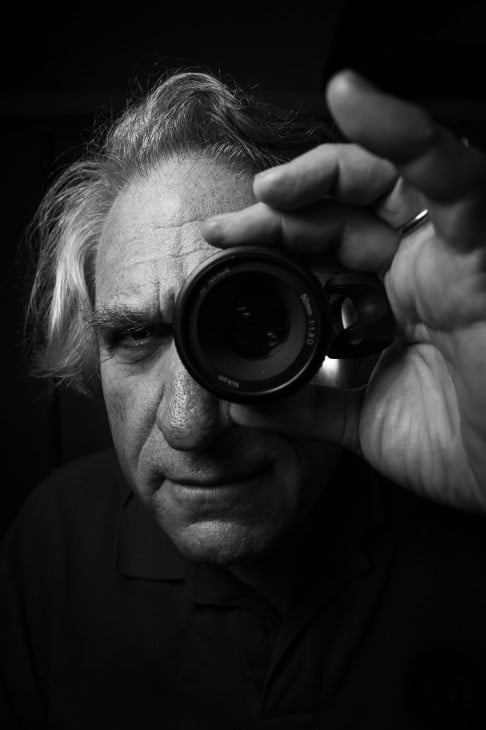
Snap! Magnum street photographer Richard Kalvar returns to Hong Kong
Kalvar talks about the art of street photography and why he's never taken good street photos in Hong Kong
How did you become a professional photographer?
I come from Brooklyn. Not only did I not have any training in photography, I had no interest in it. It was just luck and coincidence that I worked as an assistant to French fashion photographer Jerome Ducrot.
He’s a very good friend of Andre Kertesz, a very well-known Hungarian photographer who does street photography. Though Jerome didn’t give me lessons [as a mentor], I learnt lots of things by just watching him work. He showed me some works that have nothing to do with fashion like those by Robert Frank. I made a little bit of money working for Jerome and decided to travel to Europe and spend it. I took the Pentax camera Jerome gave me on the trip. I walked around, saw something and took pictures once in a while. The more I took pictures, the more interested I became. At the end of the trip after 10 months, I knew that’s what I wanted to do.
You are known as a master of street photography – taking pictures of passers-by or any spontaneous happenings on the street. What drew you to street photography?
I like taking unposed pictures of people. I am interested in just looking at the world, the lights and try to put them in a rectangle. I also do portraits [for work]. I have to set up the pictures. But this interests me less than just finding something that maybe other people don’t see.

What are the secrets to taking good street photos?
I take lots of pictures that are not interesting. That’s a little bit of a secret of mine. For every really interesting picture, there’re at least 1,000 uninteresting ones and some of them are pretty bad. But because you are taking all those uninteresting pictures, you are ready when the really interesting thing happens. You also need lots of luck. You need to set things up so that you can take advantage of luck when it happens. Setting things up means putting yourself into place where if you suddenly have good luck, you can have nice pictures.
Many of your pictures brim with humour. They can be passers-by with funny expressions or quirky compositions of people and their surroundings. Do you mean to express humour in your pictures?
Humour is very important to me. Even before I had anything to do with photography, I liked fooling around, making jokes. When I first started, I didn’t intentionally say I want to take funny pictures. But it turned out when I look at the pictures I took, the ones I really like are the ones that are funny.
Have you taken any good street photos in Hong Kong?
It’s my second time in Hong Kong. I first came here 30 years ago. I was commissioned by Fortune magazine to take pictures of people drinking cognac with Coca Cola. They did a trade story and it turned out that Hong Kong was the second-biggest market in the world for cognac consumption, which is surprising. I live in Paris now. The French would say how can you mix such exquisite alcohol with Coco Cola. But anyway, I went to a big Chinese restaurant here with round tables and dim sum trolleys with big family gatherings and many people were drinking cognac with Coca Cola. I tried to take some street photos then as I stayed here for a couple of weeks. But I didn’t take anything good.
Unlike many Westerners who are expressive, most Asians are reserved in public. Do you think it’s more difficult to get funny street photographs in Asia?
Before my trip to Hong Kong, I stayed in Japan for five months. I got lots of good pictures there. Japanese are educated and they act as if they don’t notice you. It’s almost like being invisible in Japan, even though I’m a big Westerner walking around a little village in Tokyo or Kyoto. In Japan, if you are the odd one out, it’s OK. But Chinese are not like that. When I first got here, I never got comfortable enough to just take pictures freely. You are in another culture which you are not familiar with, you don’t know how people will react. It takes a while to understand what people find offensive. I was not in Hong Kong long enough to figure it out.

So being at one with the surroundings is your style as a street photographer?
People work in different ways. I have a colleague Bruce Gilden [another Magnum photographer] who just goes up to people with a camera on flash and yells at them. But he gets good and striking pictures. We have similar backgrounds. Both of us come from Brooklyn. I can be aggressive, too. But when I take pictures, I try not to be and in a way my style is the opposite style of Bruce.
Your pictures mostly show serene street scenes or people sitting or standing. You never take any action shots like people involved in altercations on the street?
If you take pictures of people in an altercation, somebody might hit you, so I avoid it.
You came to Hong Kong for a Magnum photographer workshop co-organised by the Hong Kong International Photo Festival and held at the Jockey Club Cultural Art Centre in Shek Kip Mei. What will you do in the workshop?
I will be here for five days. I will meet with students and look at their works. I’ll send them out to take pictures. The next day, I’ll see what they shot and [discuss it with them].

